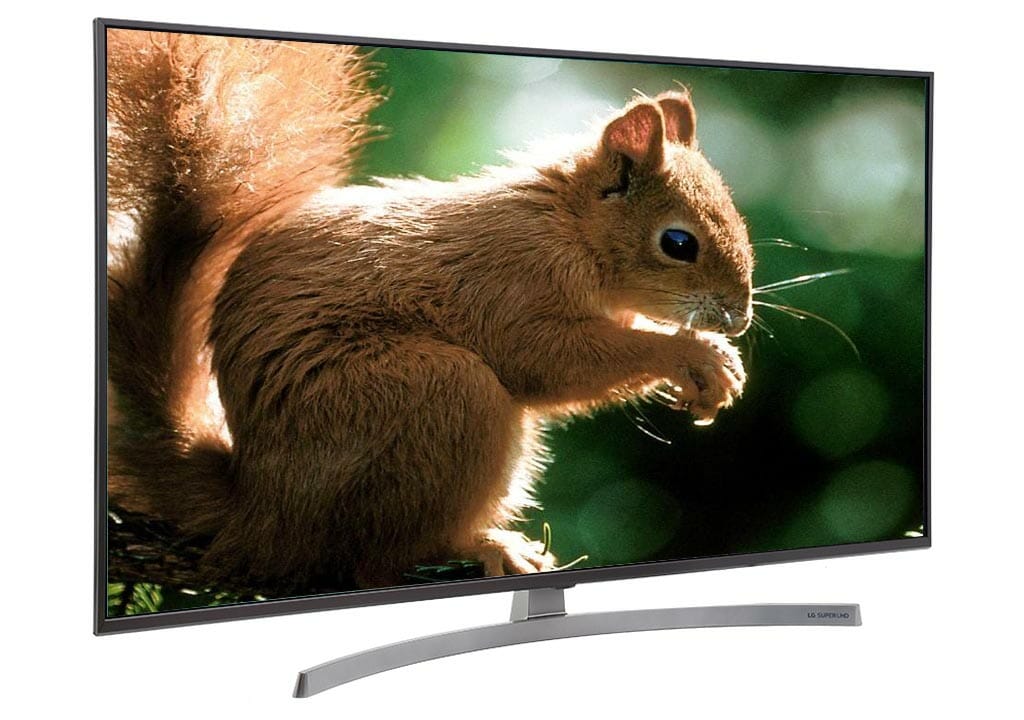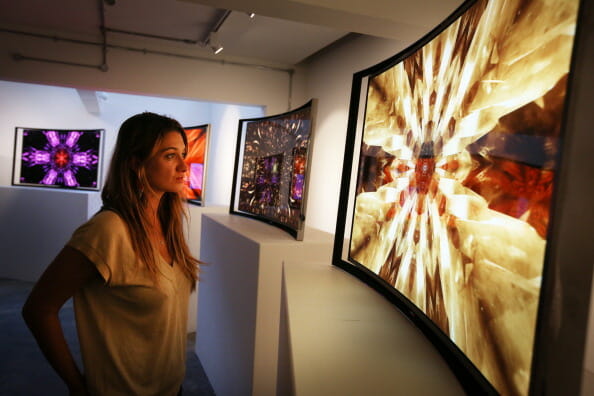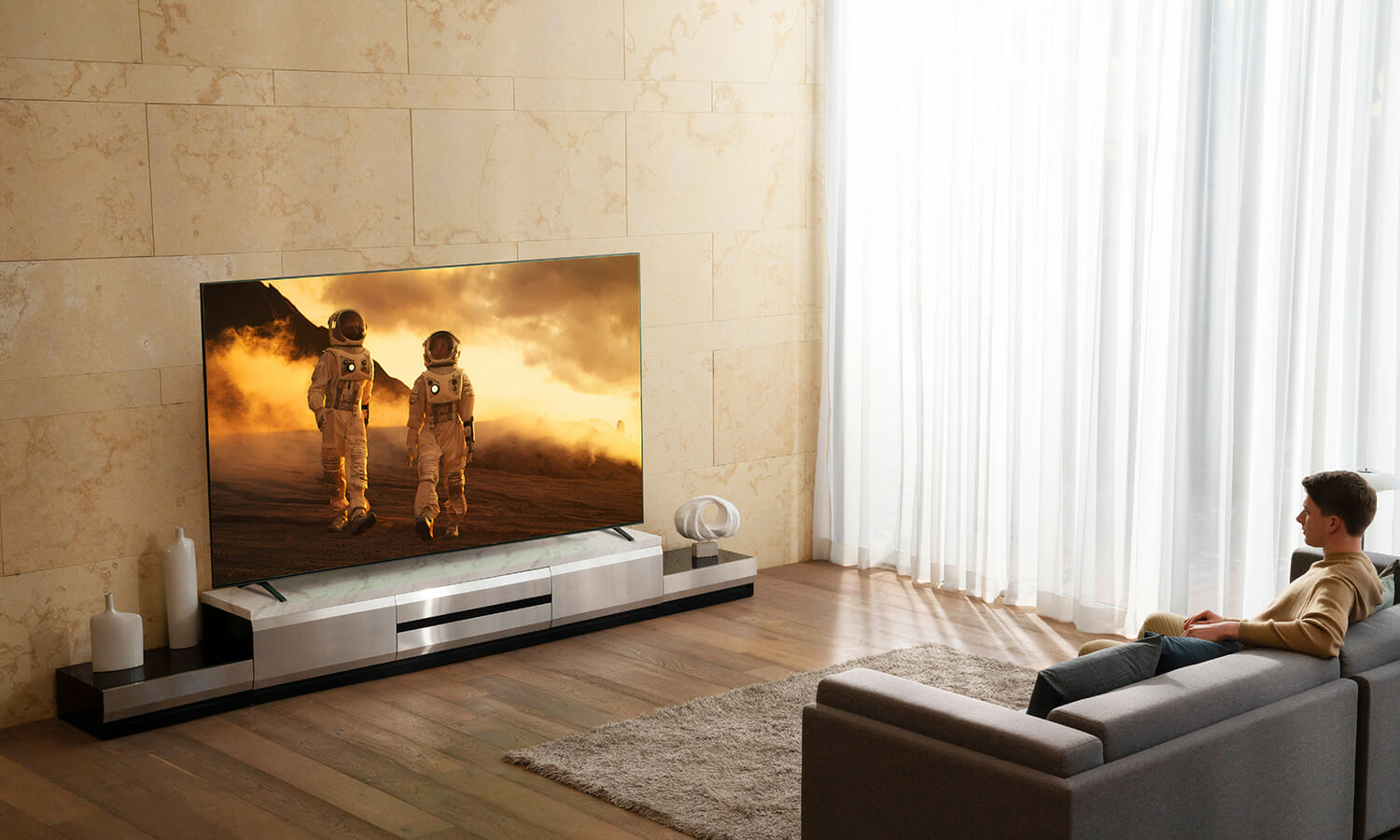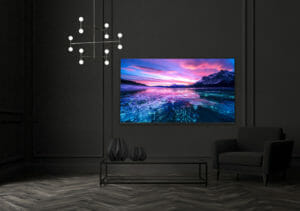Table of Contents
NanoCell TV refers to a type of display technology by the LG brand (see more TV brands) that offers wide viewing angles, outstanding color and clarity, and various smart features that help connect your home.
The NanoCell technology is the best for offering an incredible watching experience when watching your favorite movie, TV shows, sports, or playing games. The NanoCell televisions have a lot of similarities with LED TVs and LCD TVs. However, they maintain a similar resolution to other 4K TVs, and they are still backlit.
The NanoCell TV technology is more similar to QLED TVs as it comes with a layer of nanoparticles similar to a color filter and helps to enhance color accuracy. This ensures you end up with superior quality and lifelike pictures.
How Does the NanoCell TV Technology Work?
The LG NanoCell Technology works by using a filter layer that sits in the TV and helps to absorb unwanted light wavelengths. Getting rid of the unwanted wavelengths helps to purify the color output and enhance the color depth.
You can look at the NanoCell technology by thinking about paint. You may not achieve a purely blue color if you have traces of other colors in the mixture. In the same way, the LG technology helps to remove impurities, thereby enhancing the color depth, resulting in incredible image quality.
The LG NanoCell TVs use tiny bits of red, green, and blue light to paint their pictures. Although absorbing unwanted light wavelengths may look like removing color, the result is enhanced color depth. The unwanted dull wavelengths that would taint the blue, red, and green sub-pixels are removed.

NanoCell TV doesn't offer anything extra than what you get from 4K TVs. It still provides the same eight million-plus pixels. The incoming light can affect how the colors look on your TV display. Additionally, neighboring pixels can bleed color to the neighboring pixel affecting the color accuracy. However, the NanoCell technology helps make the blue, red, and green colors displayed look better.
Some high-end NanoCell televisions also come with a feature known as Full Array Local Dimming. The FALD refers to a smart tech that dims the backlight of your TV when there are dark scenes. This is a technology the OLED TVs also deliver effectively, though they are more expensive.
NanoCell TV is an excellent option if you are looking for better quality images than the standard LCD TV. The TVs also support the HDR Dolby Vision content, and it also features the Dolby Atmos sound that ensures you enjoy the most cinema-like experience. Also, if you compare the price of UHD and NanoCell TVs, the latter will may cost you a little more money (see more UHD TV reviews).
You can also have voice control over your device as the LG TVs are also compatible with Google Assistant.
Pros of a NanoCell TV
- Top-notch color accuracy that results in sharp and high-quality images
- A wide range of viewing angles ensures you enjoy quality images irrespective of your viewing position
- The NanoCell TV doesn't experience burn-in even when left in a static image for an extended period
- The LG NanoCell TV doesn't fade like the traditional LCD TVs
- They are less expensive, and you can find them at half the price of OLED TVs
Cons of NanoCell TVs
- Higher power consumption as the backlight is on at all times
- The NanoCell screen doesn't offer dark blacks like the OLED TV
- NanoCell TVs use a backlight like other LCDs. Thus, you may not enjoy high-quality images as the OLED TVs
OLED TV Technology
The organic light-emitting diode (OLED) is a display technology where every pixel is lit individually.
It doesn't require a backlight to show an image.
One advantage of the OLED TV is that its possible to achieve true blacks on the screen. When the part of the screen is black, the pixels are off. Each pixel is lit individually, which means the screens have a wider viewing angle than LG NanoCell TVs or standard LEDs.
The OLED technology offers incredible images. The images are detailed as the technology helps to provide vivid colors. The TVs boast a high rating from TV experts due to their deep blacks, outstanding dynamic range, and contrast.
Is OLED Better than NanoCell TV?
The LG NonoCell TVs are LCD screens and come with an in-plane switching (IPS) panel. As such, they offer a wide range of viewing angles. Additionally, NanoCell screens feature a nanoparticle layer that filters all the unwanted wavelengths that would affect the brightness and color accuracy of the screen.

The nanoparticle layer ensures that no color can bleed into other parts of your screen. Therefore, NanoCell TVs offer more accurate colors compared to LEd screens (see also Toshiba TVs).
On the other hand, OLED screens use different technology. It offers you the most vivid colors, and it also makes it possible to achieve true blacks since the organic light-emitting diodes are self-illuminating. The screens can come in curved formats, and they can also be thin as they don't require a backlight.
Since each pixel is lit individually, OLED televisions have outstanding image quality and are also more energy-efficient. They boast a fast response time and low input lag, making them ideal for gaming enthusiasts.
So, which is the better option for you?
OLED TVs beat NanoCell TVs in various aspects (see Sharp TVs). For instance, OLED offers better picture quality, deeper blacks, brighter whites, better energy consumption, and a more immersive gaming experience (see VIZIO TVs gaming settings here).
On the other hand, NanoCell doesn't risk burn-in like the OLED, and it is a better option to use in brighter rooms. In addition, for more info on the subject, check out our NanoCell and OLED comparison.
Which is Better Between NanoCell and QLED TVs?
Both NanoCell and QLED use the same principle of LED TVs, but each comes with an enhancement technique, with its pros and cons.
Samsung QLED TVs come with a technique known as "quantum dots LED TV." The quantum dots refer to small nanocrystals that are layered behind the LCD panel. When the nanocrystals receive some light, they illuminate in blue, red, and green. The colored light - see best Samsung color settings here - then transmits to the green, red, and blue images you see on your screen.
On the other hand, the NanoCell TV by LG - see 'LG NanoCell Review' - comes with nano-scale particles layered in front of the LCD panel. The particles act as a light-absorbing filter that removes unwanted dull colors from your image. Therefore, you end up with purer greens and reds and a more smooth transition between similar colors.

Both techniques by Samsung QLED and LG NanoCell ensure you enjoy a much better image quality. However, the two have some practical differences. For instance, QLED technology comes with a vertical alignment (VA) panel. The VA panels make use of the vertically aligned liquid crystals. The crystals tilt if a voltage is applied to allow light to pass through.
The most significant benefit of the VA panels is the sufficient contrast and brightness for HDR content, and it also ensures deeper blacks. The downside of the display technology is that it offers a limited viewing angle. Thus, the colors look distorted, and they slightly lose their luminosity when you view them from certain angles.
On the other hand, the LG NanoCell screens come with in-plane switching panels. Unlike the VA panels, where the crystals are horizontal, here they are aligned parallel. The panels are better at handling reflections, and the technique also offers a broader viewing angle. Therefore, you can enjoy your favorite movie or sports show from various sitting positions.
One downside of the IPS panel is that the blacks are not uniform and not as deep. If you watch the screen in a dark room, you can notice a dark gray stitch on display due to the backlight.
So, which one is the best?
The QLED screen offers deeper blacks and has a better contrast ratio. However, you should ensure your viewing position is opposite the screen for the best results. NanoCell is not bothered by reflections. However, it is the second choice if you want to watch some movies in a dark room at night.Should You Buy an LG NanoCell TV?
LG NaNoCell TV's wide range of viewing angles ensures you don't have to quarrel about who gets the best seat in the room. The top screen layer deals with the ambient light, while the low input lag is advantageous for gaming enthusiasts. Higher models of NanoCell TV support up to 120Hz of refresh rate, while some also support the variable refresh rate. This helps the TV to change its refresh rate depending on the content or task.
The LG TVs have a lower contrast which affects how the screen performs with HDR content.
Final Thoughts
LG is a reputable brand (see also Hisense and Sony) that you can trust to offer you high-quality devices. The company doesn't disappoint with the NanoCell TV. It comes with incredible features that help you to enjoy a lifelike watching experience. For instance, the anti-reflective layer helps to deal with ambient light. Also, it comes with a wide range of viewing angles, ensuring you can enjoy watching from various positions. On a similar note, if you want your TV to fit a tight budget and are a casual viewer, look for more affordable TV brands like Vizio, Hisence, or TCL.



Would you know where to get a chart comparing OLED, QLED, NANO, UHD, LED to help on selling TV’s.